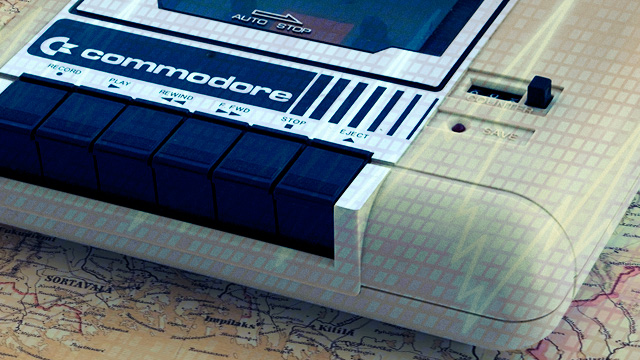Seinäjoki, Finland was a tough place to be a budding geek back in 1985. Just ask Eero Tunkelo, a grade school student with a doctor for a father, a mother who taught sewing and textile design, and a newfound love for computers and programming. "Computers were new, so anything you did, it was—wow!" he told me during a recent phone call. Such was Tunkelo's passion for the technology that he spent an entire summer working so that he could purchase his own Commodore VIC-20—an early home-oriented machine that ran Commodore BASIC 2.0 and predated the more advanced Commodore 64. With his VIC-20, Tunkelo taught himself BASIC, then studied assembly language. He wrote programs that ran "straight to the metal," as he put it, but also came from the heart. One included graphics that celebrated his sister's high school graduation. But the young innovator felt isolated. "Computers were not as popular as they are now," Tunkelo said, and few schools had one. Then came a remarkable radio show that changed the landscape for him and a generation of Finnish technology lovers—a show that literally broadcast code over the airwaves.
The Micro Club
This work-in-progress was produced by the Finnish Broadcasting Company (known by its Finnish abbreviation, YLE), Finland's public media system. Educator Kai R. Lehtonen, who produced educational radio shows for Finnish schools, supervised the new show—although he disliked using the "e-word." "My personal view was that if we advertised too much the 'educational' side we would be like the British redcoats in the American revolutionary war and that we should rather act as the American minutemen who took their adversary by surprise," Lehtonen told me in an e-mail interview. "The purpose should be to catch the audience because the programs were interesting and well made and not only because a teacher would order the kids to listen."

Eero Tunkelo
At the top of Lehtonen's priorities list was encouraging his listeners to explore computing, and he was captivated by early experiments in the Netherlands which involved streaming computer code over radio frequencies. The finer points of the technique went over his head—"I am neither too technically civilized a person nor a computing guru," he confessed—but the basic idea was clear enough. "If you wrote a piece of code in a computer, saved it on a [Commodore] C-cassette, took that cassette out and listened to it with an ordinary cassette recorder, you heard sounds," Lehtonen explained. "But as sounds could be copied to another tape and as sounds could be transmitted over radio, then why should it not be possible to receive even these sounds of the code, record them with a C-cassette recorder and have the recorded sounds do their trick in another computer?" In other words—why couldn't you distribute code by simply playing it over the radio while enthusiasts taped it for later use?
For their experiments, the Dutch had developed their own BASICODE language variant, but Lehtonen chose to use regular BASIC code "to make things simpler." YLE experimented cautiously with the idea through the early 1980s. Early attempts took place on "Kansan mikrokerho," a YLE show about computers whose title loosely translates from Finnish into "Everybody's micro club." Encouraged by a series of rough tries, Lehtonen and his team decided to go for the gold on August 21, 1985 with a short bit of code broadcast as part of YLE's "Radio Rex" technology magazine. The script calculated how many years, months, and days elapsed between two dates supplied by the user. The hosts asked their computer-equipped listeners to turn their devices on and to record what they came to call the "buzzing." Then the buzzing began—and lasted for 33 seconds. Here is the script as it streamed:
Read 8 remaining paragraphs | Comments
DIGITAL JUICE

No comments:
Post a Comment
Thank's!